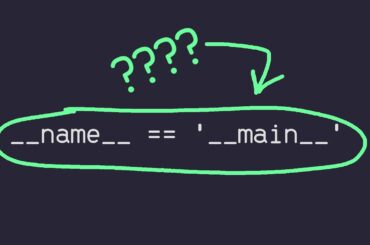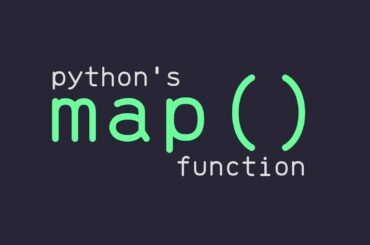“Repeating a task” in Python refers to the process of executing the same block of code multiple times. This can be achieved using various looping constructs such as “for” and “while” loops.
What is looping?
Looping is a programming concept that allows you to execute a block of code multiple times. It is a powerful and essential construct that allows programs to perform repetitive tasks, process large amounts of data, and automate complex workflows.
In Python, there are two main types of loops: “for” loops and “while” loops. A “for” loop is used to iterate over a sequence of elements, such as a list or a range of numbers. A “while” loop is used to repeat a block of code as long as a certain condition is true.
Here’s an example of a “for” loop that iterates over a list of numbers:
numbers = [1, 2, 3, 4, 5]
for num in numbers:
print(num)This loop will execute the code inside the loop once for each element in the numbers list, and will print each number to the console.
Here’s an example of a “while” loop that repeats a block of code until a condition is met:
i = 1
while i <= 5:
print(i)
i += 1This loop will execute the code inside the loop as long as i is less than or equal to 5. It will print the value of i on each iteration and then increment i by 1.
In summary, looping is a programming concept that allows you to repeat a block of code multiple times. There are two main types of loops in Python, “for” loops and “while” loops, which allow you to iterate over sequences of elements and repeat code as long as a condition is true, respectively.
Understanding For Loops
A “for” loop is a powerful construct in Python that allows you to iterate over a sequence of elements and perform an action on each element. The basic syntax of a “for” loop in Python is as follows:
for variable in sequence:
# code block to be repeateIn this syntax, variable is a variable that takes on the value of each element in the sequence on each iteration of the loop. The code block to be repeated is indented under the for statement and contains the action to be performed on each element.
Here is an example of a simple “for” loop that iterates over a list of numbers and prints each number to the console:
numbers = [1, 2, 3, 4, 5]
for num in numbers:
print(num)This code will iterate over each element in the numbers list and print the value of the num variable to the console.
One of the powerful features of “for” loops in Python is the ability to iterate over a range of numbers. The range() function is used to generate a sequence of numbers that can be used in a “for” loop. Here is an example:
for i in range(5):
print(i)This code will iterate over the sequence of numbers from 0 to 4 and print each number to the console.
You can also use a “for” loop to iterate over a dictionary in Python. The items() method is used to return the key-value pairs in the dictionary, which can be accessed using a tuple. Here is an example:
person = {'name': 'John', 'age': 30, 'gender': 'male'}
for key, value in person.items():
print(key, value)This code will iterate over the key-value pairs in the person dictionary and print each key and value to the console.
Finally, you can use nested “for” loops to perform complex iterations. Here is an example:
for i in range(1, 6):
for j in range(i):
print('*', end='')
print()This code will print a pattern of asterisks to the console, with the number of asterisks on each line increasing from 1 to 5. The end parameter in the print() function is used to prevent the asterisks from being printed on separate lines.
In summary, “for” loops in Python are a powerful construct that allow you to iterate over sequences of elements, perform actions on each element, and perform complex iterations using nested loops. The range() function and the items() method can be used to iterate over sequences of numbers and key-value pairs, respectively.
While Loop
A “while” loop is a type of loop in Python that allows you to repeat a block of code as long as a certain condition is true. The basic syntax of a “while” loop in Python is as follows:
while condition:
# code block to be repeatedIn this syntax, condition is a Boolean expression that determines whether the loop should continue to execute. The code block to be repeated is indented under the while statement and contains the action to be performed on each iteration of the loop.
Here is an example of a simple “while” loop that counts from 1 to 5 and prints each number to the console:
i = 1
while i <= 5:
print(i)
i += 1In this code, the i variable is initialized to 1, and the loop will continue to execute as long as i is less than or equal to 5. The value of i is printed to the console on each iteration of the loop, and i is incremented by 1 at the end of each iteration.
You can also use a “while” loop to iterate over a list or other sequence of elements. Here is an example:
numbers = [1, 2, 3, 4, 5]
i = 0
while i < len(numbers):
print(numbers[i])
i += 1In this code, the i variable is initialized to 0, and the loop will continue to execute as long as i is less than the length of the numbers list. The value of numbers[i] is printed to the console on each iteration of the loop, and i is incremented by 1 at the end of each iteration.
You can also use a “while” loop to perform an action until a certain condition is met. Here is an example:
response = ''
while response != 'quit':
response = input("Enter a command: ")
print("You entered: ", response)In this code, the loop will continue to execute as long as the user does not enter the word “quit”. The input() function is used to prompt the user for input, and the value of response is printed to the console on each iteration of the loop.
In summary, “while” loops in Python are a powerful construct that allow you to repeat a block of code as long as a certain condition is true. They can be used to count, iterate over sequences of elements, and perform actions until a certain condition is met.


